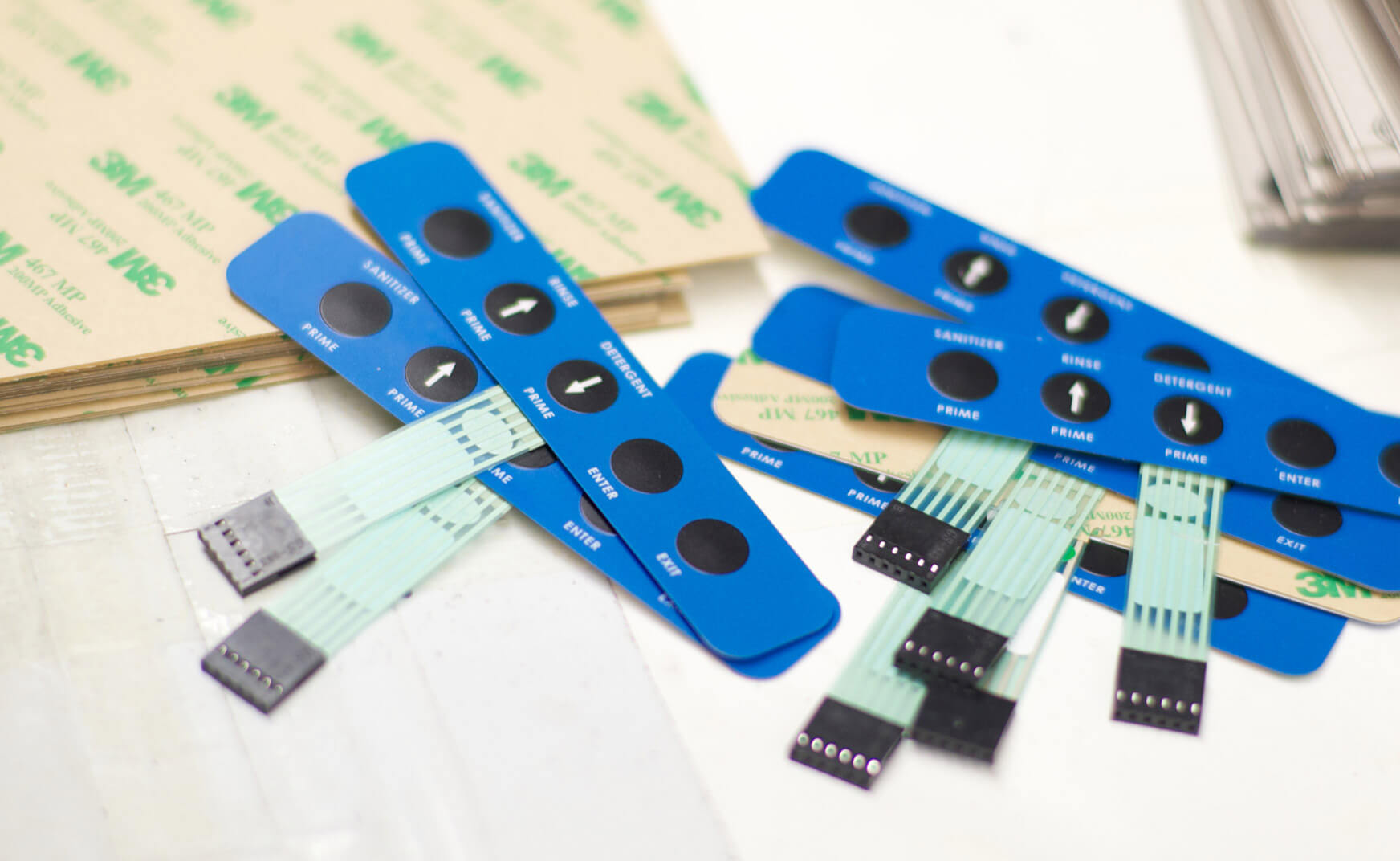Necessary Attributes to Try To Find When Picking a Membrane Switch
Necessary Attributes to Try To Find When Picking a Membrane Switch
Blog Article
Recognizing the Performance of Membrane Switches Over for Customer Interface Gadget
The performance of membrane layer changes stands for a significant innovation in individual interface layout, incorporating effectiveness with aesthetic adaptability. These buttons operate through a multi-layered framework that equates user communications into electric signals, permitting both portable designs and resilience versus environmental aspects. As sectors significantly focus on user experience, recognizing the nuances of membrane layer switch innovation becomes crucial. What implications do these improvements hold for future applications, and how might they redefine customer interactions across numerous devices?
What Are Membrane Layer Buttons?
Membrane buttons are cutting-edge user interface tools that help with individual communication with electronic equipment. These flexible elements include numerous layers, consisting of a visuals overlay, spacer, and a published circuit layer. The layout allows for a seamless integration into various digital tools, boosting both the visual and practical elements of interface.
Membrane layer buttons are typically employed in a vast array of applications, from house appliances to commercial equipment and clinical devices. Their construction usually includes a thin account, making them a perfect choice for small designs. The tactile comments offered by these buttons can be crafted to meet particular user preferences, guaranteeing efficient communication in between the customer and the tool.
Resilience is an additional considerable benefit of membrane buttons, as they are immune to dust, moisture, and chemicals, which boosts their life-span in requiring settings. Furthermore, these switches can be customized in regards to shape, size, and visuals layout, permitting branding and user-specific functions. Overall, membrane changes stand for a useful service for enhancing individual experience in electronic tools, incorporating capability with visual charm in an efficient manner.
Exactly How Membrane Layer Switches Work
Operating on an uncomplicated concept, membrane switches make use of a split building to sign up customer input successfully. Each button consists of multiple layers, consisting of a published circuit layer, a spacer layer, and a leading visuals layer, which are created to interact flawlessly. When a user presses the top layer, it presses the spacer layer, bringing the conductive aspects of the circuit layer right into contact with each various other.
This get in touch with produces a shut circuit, signaling the tool to carry out a particular feature. The layout permits for numerous arrangements, including tactile responses, which can improve the customer experience by offering a physical feeling upon activation. The materials utilized in membrane switches often include adaptable substratums, such as polyester or polycarbonate, which guarantee toughness and durability versus wear and tear.

Key Benefits of Membrane Buttons

Another significant advantage is their density. Membrane switches are slim and lightweight, which makes it possible for manufacturers to conserve room in their tools without giving up capability. This attribute is particularly helpful in applications where weight and volume are essential considerations.
In addition, membrane switches are immune to dirt, wetness, and chemicals, enhancing their longevity. This durability expands their lifespan and decreases the demand for constant substitutes, causing price savings in time.
Moreover, the responsive feedback offered by membrane buttons can be optimized to boost customer communication. They can consist of functions such as raised buttons or distinct clicks, boosting functionality and individual experience.
Applications Across Industries
Customer the original source interface tools using membrane layer switches are prevalent in a broad variety of markets, showcasing their versatility and capability. Membrane Switch. In the clinical industry, membrane switches are important to gadgets such as diagnostic equipment and client surveillance systems, where their durability and simplicity of cleansing are vital for keeping hygiene requirements. Likewise, in the automobile sector, these switches are used in dashboard controls and infotainment systems, providing a sleek and modern-day interface for users.
Moreover, the customer electronic devices sector take advantage of membrane switches in home appliances and portable devices, where small style and straightforward interfaces enhance customer experience. Industrial applications likewise take advantage of membrane layer changes for control panels in machinery and automation my site systems, emphasizing their robustness and resistance to harsh settings.
In the aerospace and protection markets, membrane switches are made use of in cockpit controls and devices, where reliability and efficiency under severe conditions are paramount. Additionally, the pc gaming market increasingly includes membrane layer switches in controllers and gallery makers, contributing to an engaging customer experience. Generally, the flexibility of membrane layer changes enables their prevalent use throughout many industries, highlighting their significance in modern-day interface design.
Future Patterns in Membrane Change Technology

Additionally, making use of sophisticated products, such as polycarbonate and polyester movies, is expected to rise, supplying enhanced durability and resistance to environmental stress factors. These products contribute to the general durability of membrane buttons, making them ideal for harsher industrial applications.
Moreover, the unification of smart technology, including IoT connection, will certainly make it possible for membrane layer buttons to communicate with other devices and systems, helping with a much more interactive user experience. This pattern lines up with the growing demand for smart devices across various sectors, from healthcare to consumer electronics.
Lastly, customization options are anticipated internet to increase, permitting producers to produce bespoke options tailored to particular user needs and choices. These growths will certainly position membrane layer buttons as essential components in the advancement of interface modern technology.
Final Thought
Finally, membrane switches represent a crucial innovation in interface innovation, offering a dependable and versatile remedy for diverse digital applications. Their layered construction promotes small design, while attributes such as tactile feedback improve customer communication. The sturdiness against ecological elements better solidifies their utility across multiple markets. As developments in material science and touch sensing innovations continue, the functionality and applicability of membrane switches are anticipated to broaden, reinforcing their significance in contemporary digital gadgets.
Report this page